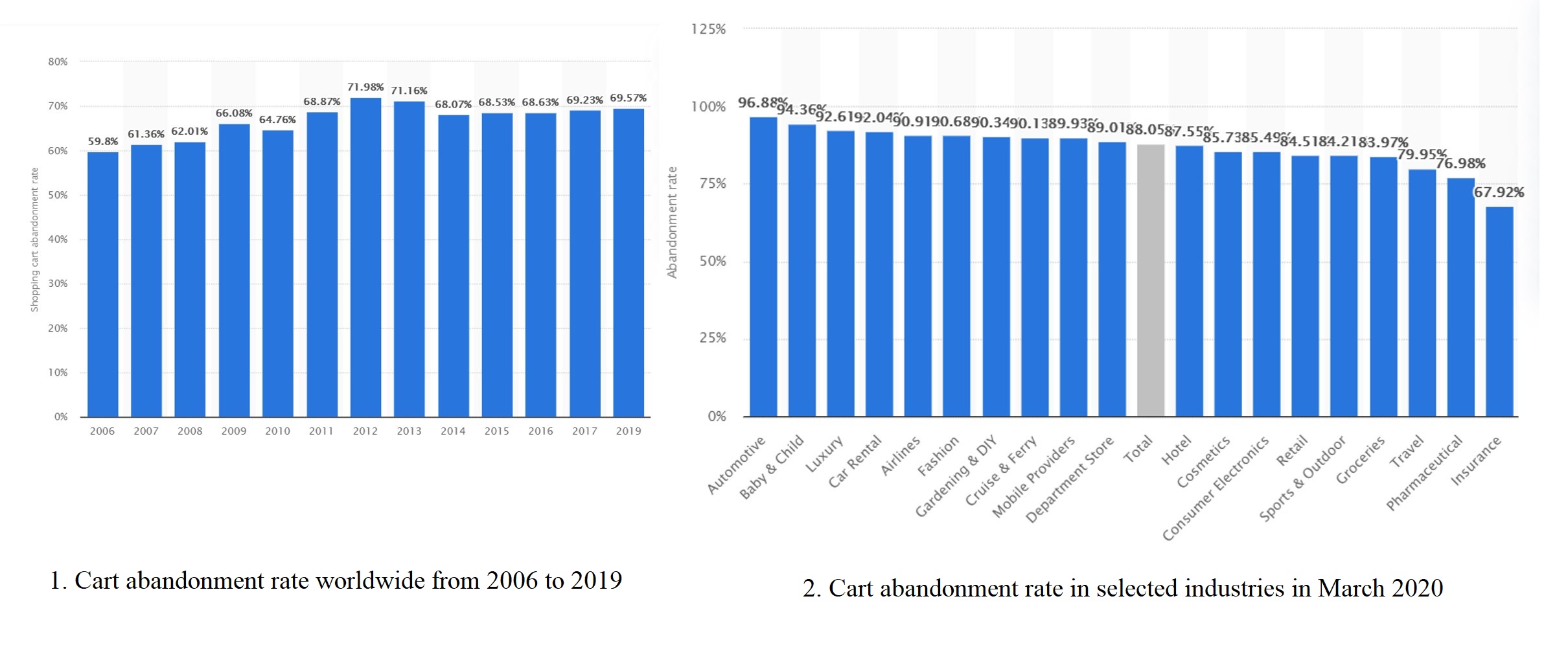Pandemic-Induced E-commerce Strategies That Will Outlive COVID
The only constant is change.
There is no scenario better than the coronavirus chaos to support this fact. The pandemic brought radical changes to healthcare, consumer goods, travel, finance, and education. Amid stay-at-home orders, restrictions, and most importantly fear, we saw an overnight shift in worldwide consumer behavior as well.
The reality is there is no way of going back to the pre-pandemic “normal” anytime soon. The only way to move forward is to accept that this change is irreversible and find ways to adapt.
Retailers around the world have been quick to recognize this and make necessary changes to meet customer expectations. We, at Codaemon, have been working with brick-and-mortar retailers to help put up practical and functional online storefronts with quick turnarounds all through the pandemic. Apart from omnichannel solutions, retailers with existing webshops have come to us with requirements like speed optimization, design changes, replatforming, expansion to new geographical regions, and many more.
The upshot of all this is that retailers are reimagining their baseline and putting customer experience at the center of their moves. These steps are not only bringing in short-term gains but are sure to have long-term payoffs too. Let’s look at some of the pandemic-induced e-commerce strategy adoptions that are here to stay for good.
Omnichannel Experience
Business continuity is the number one priority for retailers. With lockdowns forcing customers to move their shopping online, many brick-and-mortar retailers have had to add an online entity to their businesses. On the face, this may seem like a defeat for physical store owners in the age-old e-commerce battle. But it will have long-term positive implications because the mass flight to online shopping is expected to outlive COVID.
To make the omnichannel experience smooth for customers, retailers are also laying stress on in-store customer service. We have seen features like curbside pickup, in-store advisor program, complaint handling gather steam. The idea is to provide customers with a seamless digital and in-store experience with elevated flexibility and smooth transition between the two platforms.
Updated & Reliable Web Store
Pandemic or not, having a reliable web store with the right tech stack is critical to the success of an e-commerce business. The closure of physical shops had customers rushing to online stores to order groceries, necessary items, food deliveries, etc. – products that primarily had an in-store customer base. This caused a massive surge in online traffic. Unfortunately, many of these online shops were not technologically equipped to handle the rush and they crashed, causing customers to abandon cart and switch to their competitors. Even omnichannel retailers with a loyal client base could barely hold on to their customers online.
We received many requests from such store owners to suggest options that would yield quick returns. Most of such stores that we analyzed were sluggish and had not been updated for years. Functionality changes would take days to implement. We worked with the owners round-the-clock to identify the best possible strategies that can be implemented with minimum downtime. Replatforming has been one of the common solutions. Last year, we replatformed more than 20 B2B and B2C brands to help them keep up with their renewed priorities.


CASE STUDY: Replatforming the website from WooCommerce to BigCommerce for a cannabis-related company, Ionization Labs
In addition to e-commerce platforms, we have been looking closely into integrations, marketing, and SEO efforts to help our clients navigate through the technology shortfalls that had been holding them back. CRM integrations have proved necessary yet again for inventory planning and forecasting – leading to increased business efficiency during the pandemic.
UX Optimization
The mass migration to digital shopping saw one major challenge surfacing – a gap between online shops and consumers who are new to online shopping. Most customers belonging to the older age group are not tech-savvy. So, they started to have more questions and difficulties. Additionally, supply chain disruptions, inventory management errors, and extended delivery timelines had left consumers of all age groups confused and anxious about their orders. To bridge this gap, we saw many retailers scrambling to get their store’s UX right.
Following are some of the UX improvements we have worked on for our clients during the pandemic:
1. CMS Integrations:
We helped clients cut down their dev budget and time by integrating content management systems that enable store owners to update product details and the content of the site without technical help. This has allowed our clients to add and edit real-time information for products that are selling out fast, may run low on stock soon, might require more time to ship, or have unavailable accessories. This is critical information, especially during uncertain times, that can aid in making informed purchasing decisions.
2. Responsiveness:
Site responsiveness is one of the primary aspects we worked on last year in addition to replatforming. While retailers introduced new items like masks, sanitizers, PPE kits, and so on in their inventories, they missed out on giving enough attention to making it easy for users to order them. So, we worked on fixing issues like compatibility, navigation, sizing tap targets, linking phone numbers, Emails and addresses, sticky CTAs, pushing important information to the top, optimizing images, etc.
3. Speed Optimization:
The onset of the pandemic had people dashing to order and stock up on essential goods. To keep up with the rush, online store owners started to pay more heed to speed optimization. Additionally, Google’s upcoming Page Experience update that will prioritize three core performance vitals in SERP rankings pulled the stakes further up. So, we had numerous speed optimization requests coming in during the pandemic. Some of the common aspects we worked on include code minification, compressing image size, removing broken links, cutting down homepage hero slides in number, lazy loading, sparing use of pop-ups, etc.
Removing Roadblocks in Checkout
Cart abandonment has always been a major concern for online retailers. In 2019, the overall cart abandonment rate stood at a little above 69% which then attained a new high of 88% with the onset of the pandemic. One of the reasons could be the massive financial impact that consumers had faced due to furloughs and layoffs. To make things easier for them, retailers had to work extra hard to make shopping for essential items (at least) uncomplicated. We analyzed that many sites lacked a smooth checkout experience and that has been one of the major contributors to cart abandonment.


Shopping cart abandonment statistics
Image 1: https://bit.ly/3c7cPof
Image 2: https://bit.ly/34yt5uj
Following are some of the common factors that will continue to play a major role in online shopping:
1. Transparency in cost
Hidden shipping charges, tax, additional cost for larger items, expedited delivery charges, etc. revealed at the checkout step cause unnecessary surprises that send customers away because these costs exceed their budget
2. Flexible payment options
Payment options should include debit and credit cards, PayPal, UPI payments, Apple Pay, payment using loyalty points. In addition, options like Buy Now Pay Later, payment in installments, store pickup have also been a huge help for consumers
3. Guest checkout
Users’ buying intent is the highest at checkout. Making them go through the extra step of creating an account at checkout deters their focus. But a guest checkout allows customers to place an order without the commitment.
4.Clarity in delivery timeline
With panic setting in and consumers ordering essential items in bulk, jargons like “Business Days” or “Working Days” made little sense. Replacing delivery duration with a date has turned out to be a huge help in these situations. Disruptions in logistics had also left customers uncertain about when they might receive the order. In such cases, it’s best to update customers about the order status and keep a communication channel open to address queries.
Streamlined Returns
A good part of cart abandonment occurs because consumers are terrified to go through a complicated return process. What works best for an optimized return process is simplification. We have seen a lot of different strategies being implemented through last year to make returns stress-free.
Macy’s extended its return window for online shoppers by 60 days during the pandemic. Other major players to have done the same include H&M, Apple, Bed Bath & Beyond, and Sephora. This goes to show the customers that the retailers they have been buying from actually care about them in their times of need. What you get in return is a loyal customer base.
A major part of simplifying the returns process is making the information visible to your customers including policy updates. What we suggest our clients:
1. Return Policy Link
Have direct links to the Returns Policy page from all product pages as well as in the footer
2. Return Window
If the return window is different for each product, ensure that it is prominently visible in the product pages.
3. Online Return
An online return feature instead of relying on labels is always better. This allows users to return an item at the click of a button – taking out the additional steps of printing labels and re-packaging. Once a user returns an item, they should be able to track the status all through refund. This removes confusion.
4. In-store Return
In-store return is a win-win for both customers and retailers. It saves the hassle for customers and the reverse shipping cost for companies. Amazon has been smart about this trend and has recently struck a deal with UPS. Amazon customers in the US can do free, no-packaging drop-offs of their returns at UPS stores. A total of 5800 such locations across the nation have been designated as drop-off points including Whole Foods locations and Amazon Book Stores.
5. Third-Party Vendors
Using third-party vendors to handle the entire return UI causes a disconnected site experience and creates confusion about support paths. It’s best to integrate order tracking in the e-commerce site itself.
6. Refund Updates
Most of the confusion with the return process occurs due to misinterpretation of very little available information. Be transparent about the refund updates. Clear information sets clear expectations for customers and reduces misinterpretation.


Amazon’s refund summary is clear timeline of milestones
What has worked best for retailers through the pandemic is making information readily available to customers – through live chat, COVID-specific FAQs about what to expect regarding orders and delivery, video consultations, order and return tracking, policy updates, product availability information, providing accurate product details to reduce returns, and providing support for practically any questions customers may have.
The pandemic isn’t over yet. Even with vaccines and protective gear, people aren’t likely to risk their health and venture out like before, especially because they now have the luxury to shop from their homes. This means the boom in online shopping is here to stay. Retailers can make the most of it by taking a proactive approach to make online shopping more convenient and keep a close eye on how each strategy change affects customer behavior. Responding to customer behavior changes in real-time is key and that’s what is going to pull us through.


